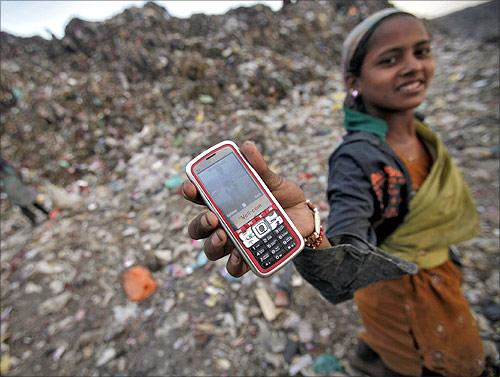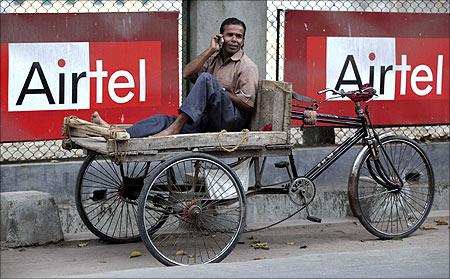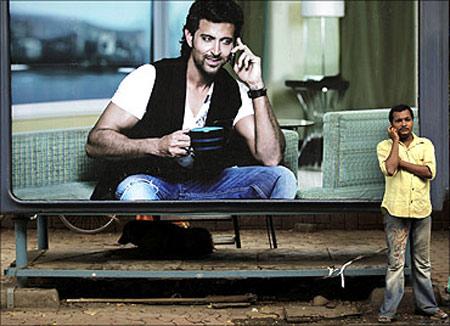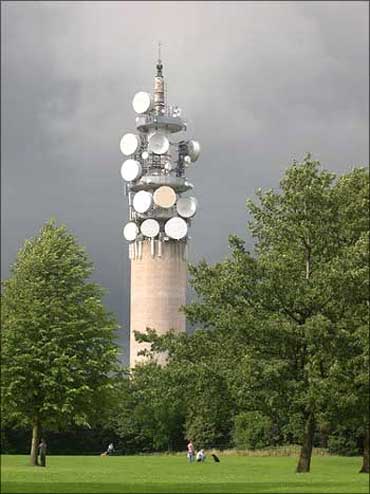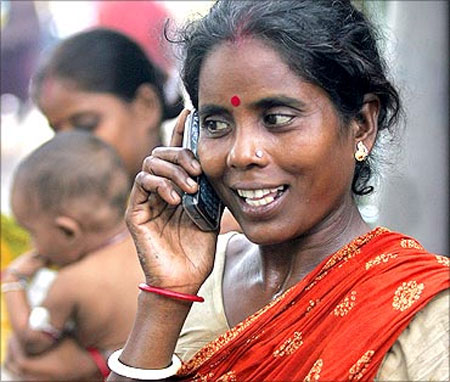 | « Back to article | Print this article |
Mobile phone radiation affects you: What's the govt doing?
While we laud the dramatic rise in India's tele-density thanks to the mobile phone penetration, it is concerning to see most subscribers, including the educated class, unaware of the possible health hazards due to radiation from mobile phones and mobile towers.
WHO states that mobile phone radiation can possibly cause cancer. Studies are ongoing to fully assess potential long-term effects of mobile phone use and WHO will conduct a formal risk assessment of all studied health outcomes from radio frequency field exposure by 2012.
A recent news report suggests that FCC, the US regulator plans to revise the radiation levels as they were set in 1990s when the mobile usage was very different. In fact, India's National Telecom Policy (NTP- 2012) too recognises the need for periodic review radiation standards.
Click NEXT to read more...
Mobile phone radiation affects you: What's the govt doing?
An inter-ministerial committee recommendation approved late last year talks about some stringent measures to curb radiation. But the big question is about effective execution.
The recommendations include educating the phone users on reducing the radiation effect, reduction in acceptable radiation levels, more commonly known as SAR - Specific Absorption rate, SAR level to be displayed on Mobile phones.
SAR indicates the rate at which human body absorbs electromagnetic power radiated from mobile phones.
While it is expected that the mobile phones sold in India will start carrying SAR details by September 2012, what would happen to the existing phones being used? For the high end mobile users, there is some hope.
Click NEXT to read more...
Mobile phone radiation affects you: What's the govt doing?
There are downloadable applications that warn users when the radiation level increases. Also, for most of the branded mobile phones, SAR info is available on the internet. What happens to the unbranded low cost phones?
The government should mandate all the mobile phone makers (Over 100 of them) to provide the radiation details for all phone models online and to be available all the retail outlets.
As of now there are no government approved facilities in India for checking SAR value of a mobile phone.
Click NEXT to read more...
Mobile phone radiation affects you: What's the govt doing?
This is because the SAR testing equipment is expensive. Obviously, that cannot be a reason considering that we are dealing with public health and more over, India is the 2nd largest mobile market in the world.
The department of telecommunications should support in establishing test labs in India, maybe through a PPP model at least in all the major cities.
It is important to note that the SAR value by itself does not guarantee that the phone is safe to be used continuously for hours like most people do.
Click NEXT to read more...
Mobile phone radiation affects you: What's the govt doing?
In a research report on mobile phone radiation, Prof Girish Kumar of IIT Mumbai clarifies that a SAR value of 1.6 W/kg means that the phone can safely be used for about 18 minutes of continuous talking ( with phone held against the ear) in a day.
It is imperative that the government and the regulator educate the subscribers on this specific aspect.
Now let us turn our attention towards the impact of radiation from the mobile towers. The data is even more shocking and research reports indicate that the effect of radiation due to mobile towers is far higher as it is a 24x7 phenomenon and affects everyone residing near the tower and not limited to mobile subscribers.
Click NEXT to read more...
Mobile phone radiation affects you: What's the govt doing?
As per government directive based on the inter-ministerial report, radiation level from mobile towers should be brought to 10 per cent of the existing limits by September 2012. Reports suggest, even this reduced limit is way above international norms.
Sample this - India currently allows 9.2W/m2 ( watt per square meter) on certain band. Come Sep 2012, the number would be 0.92W/m2, while many countries follow anywhere between 0.025 to 0.1W/m2.
Higher the power emitted by the towers, better would be coverage to the subscribers and this would cost lesser for the Telcos.
Click NEXT to read more...
Mobile phone radiation affects you: What's the govt doing?
What is the solution? Should the towers be removed? No, power level from the towers should be reduced and this means more towers and additional expenditure.
However, the cost can be reduced through infrastructure sharing among telcos, some government subsidy and marginal increase in tariff.
The telcos have been mandated to provide self-certification of radiation levels from mobile towers. DOT's TERM department is expected to conduct random test covering 10% of the towers.
Click NEXT to read more...
Mobile phone radiation affects you: What's the govt doing?
This may be grossly insufficient considering that there are lakhs of towers installed across the country. There is a need for a framework that would allow periodic collection of data through designated third parties.
Should the pollution control boards in the states become a key stakeholder in monitoring radiation?
In most of the developed countries, telcos have started deploying Distributed Antennae System (DAS) to overcome the coverage problems.
Click NEXT to read more...
Mobile phone radiation affects you: What's the govt doing?
This reduces the number of towers needed and more importantly helps in reducing radiation. Globally, examples abound on DAS implementation in airports, malls, hospitals, educational institutions and resorts.
In fact an Instat research report predicts significant growth in DAS implementation in the APAC region by 2015.
In Building Solution (IBS) and DAS have been identified as key drivers in a TRAI report and also in the NTP 2012. However, question remains if and when will it be implemented?
Click NEXT to read more...
Mobile phone radiation affects you: What's the govt doing?
There is an urgent need for simple hand-held devices for measuring radiation and such devices should be available at affordable prices.
In fact, such devices must be mandated in educational institutes, hospitals, malls, public places and even residential areas.
Although mobile has become an integral part of our lives, there are increasing evidences indicating health hazards due to mobile radiation from mobile phones and towers.
Click NEXT to read more...
Mobile phone radiation affects you: What's the govt doing?
It is imperative that the government persuades all the stake holders to impart awareness among the Indian subscribers.
Considering that public health is most important, the government's resolve to address the issue through stringent measures, along with a clear implementation plan holds the key!
Let's hope to see some real action from this September.
The author is Vice President, Symphony Teleca. Views expressed are personal.
